9.3 Applications of Population Ecology
Conservation of Endangered Species
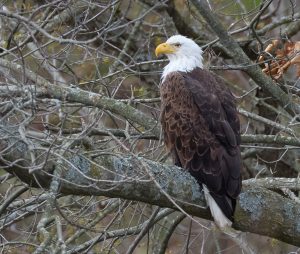
Population ecology plays a vital role in the conservation of endangered species by helping scientists understand the factors that influence population size, growth, and survival. In Canada, over 850 wildlife species are currently listed as at risk of extinction. Conservation biologists use population models to identify threats, such as habitat loss, low reproductive rates, or high mortality, and to design strategies that support population recovery.
A powerful example of successful conservation in Ontario is the bald eagle (Haliaeetus leucocephalus), which was once nearly extirpated (locally extinct) from southern Ontario due to habitat loss, hunting, and especially the widespread use of the pesticide DDT. DDT caused eggshell thinning, leading to reproductive failure. By the 1980s, bald eagles had disappeared from much of their former range in Ontario. Thanks to decades of conservation work, including the ban on DDT, protection of nesting sites, and monitoring programs, bald eagle populations have rebounded. In 2023, the Ontario government officially removed the bald eagle from the province’s list of at-risk species.
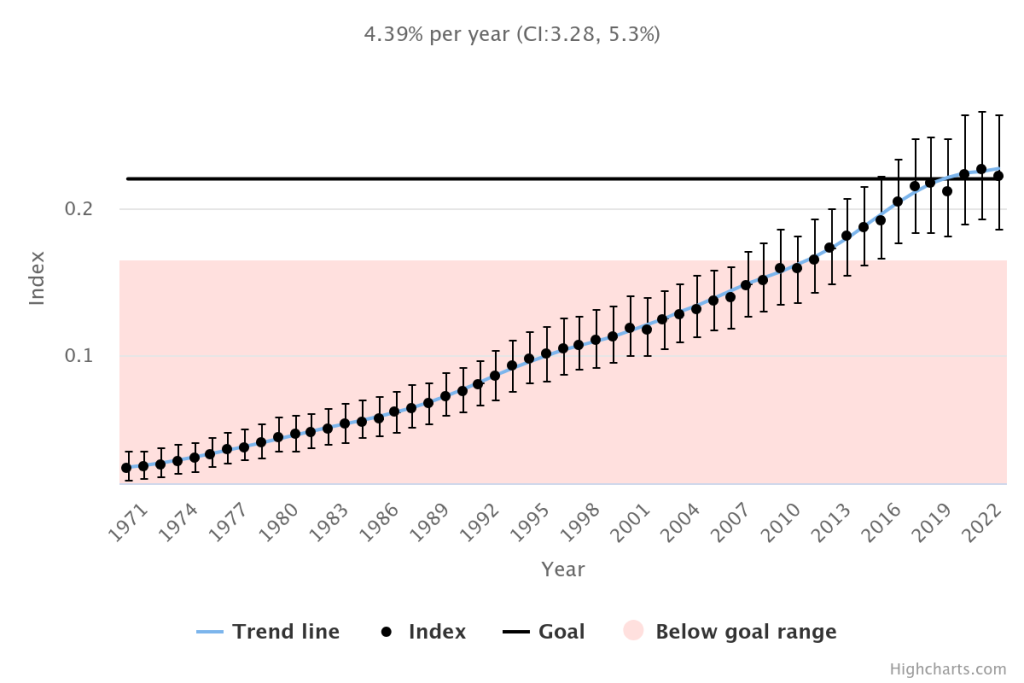
Figure 9.3.2 Image Description
A line graph showing the increase in an index from 1971 to 2022. The x-axis represents years (1971–2022), and the y-axis represents the index value. Black dots with error bars mark index values, while a blue trend line indicates steady growth.
- In 1971, the index starts below 0.02 and increases consistently over time.
- By the mid-1990s, the index surpassed 0.1, continuing to climb through the 2000s.
- Around 2015, the index rises above 0.2 and approaches the black horizontal goal line.
- By 2022, the index is near 0.22 with wider error bars.
A shaded pink area marks the below goal range (index values under 0.2). The trend shows an average annual growth of 4.39% per year (CI: 3.28%, 5.3%).
Sustainable Resource Management
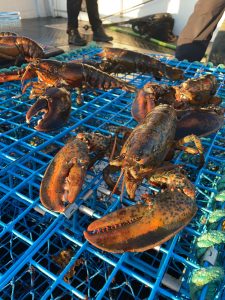
Population ecology is essential for sustainable resource management, managing natural resources in a way that meets human needs while preserving ecosystem health. This approach uses ecological data, such as population size, reproductive rates, and harvest pressure, to ensure that resources like forests, fisheries, and wildlife can regenerate over time.
A strong example of this in Canada is the Atlantic lobster (Homarus americanus) fishery, one of the country’s most economically valuable and sustainably managed fisheries. Fisheries and Oceans Canada (DFO) applies population ecology principles to monitor lobster stocks, set science-based catch limits, and regulate fishing seasons. Conservation measures include:
- Trap limits to prevent overharvesting
- Minimum size regulations to allow lobsters to reproduce before being caught
- Protection of egg-bearing females to support future generations
These strategies have helped maintain healthy lobster populations while supporting the livelihoods of thousands of coastal fishers. The lobster fishery demonstrates how population ecology can guide resource use that is both economically viable and environmentally responsible.
A Cautionary Tale: Atlantic Cod
In contrast, the collapse of the Atlantic cod (Gadus morhua) fishery in the early 1990s shows what can happen when ecological warnings are ignored. Despite declining stock assessments, cod continued to be overfished for decades which ultimately led to a population crash and a federal moratorium that remains in place for many cod stocks. This slow recovery highlights the importance of using population data to guide sustainable practices before it’s too late.
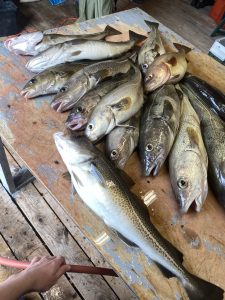
Invasive Species Management
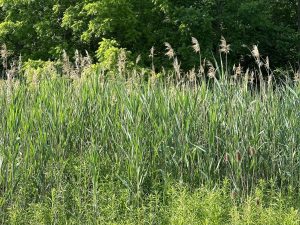
Invasive species are non-native organisms (those introduced outside their natural range) that spread rapidly and cause harm to native ecosystems, economies, or human health. Population ecology helps scientists understand how invasive species grow, reproduce, and spread to provide information necessary to develop effective control strategies.
Ontario is home to hundreds of invasive species, including plants, animals, insects, and pathogens that threaten the province’s biodiversity. One of the most aggressive invasive species in Ontario is Phragmites (common reed, Phragmites australis), a tall, fast-growing grass native to Eurasia. It has spread rapidly through wetlands, roadside ditches, and shorelines. Phragmites form dense stands (up to 200 stems per square metre) that crowd out native plants, reduce habitat for frogs, turtles, and birds, and block access to waterways.
General control measures for invasive species include early detection and rapid response to prevent establishment, mechanical removal such as cutting or digging, and targeted herbicide application where appropriate. In some cases, biological control (see next section) can help suppress invasive populations. Additionally, public education is essential to limit the unintentional spread of invasive species through human activity.
Conservation groups like the Nature Conservancy of Canada (NCC), in partnership with the Ontario Ministry of Natural Resources and Forestry, have used population ecology to map infestations, monitor spread, and evaluate control methods. These efforts have led to the gradual recovery of native wetland vegetation and improved habitat for wildlife in some areas.
Invasive species cost the Canadian economy an estimated $3.6 billion annually. By applying ecological principles, scientists and land managers can slow the spread of invasive species and reduce their impact on local ecosystems.
Other Invasive Species in Ontario
Here are some other examples of invasive species that you are likely to encounter in Ontario:
Common Buckthorn (Rhamnus cathartica)
Introduced as a hedge plant, this shrub invades forests and fields, outcompeting native plants and altering soil chemistry, making it harder for native species to grow.
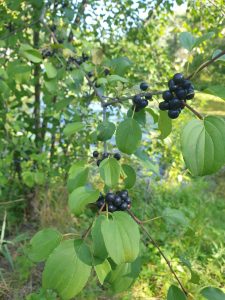
Garlic Mustard (Alliaria petiolata)
A biennial herb that spreads aggressively in forests, displacing native wildflowers and releasing chemicals into the soil that inhibit the growth of other plants.
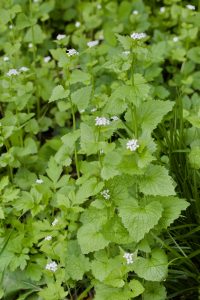
European Starling (Sturnus vulgaris)
Introduced to North America in the late 1800s, European Starlings are now widespread across Ontario. They compete aggressively with native birds for nesting sites. Their large flocks can also damage crops and create sanitation issues in urban areas.
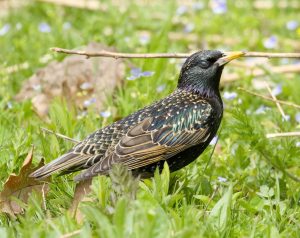
Emerald Ash Borer (Agrilus planipennis)
A metallic green beetle native to Asia that has devastated ash tree populations across Ontario. Larvae feed under the bark, cutting off water and nutrient flow, killing trees within a few years.
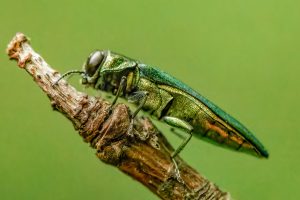
Zebra Mussel (Dreissena polymorpha)
A small freshwater mussel from Eurasia that clogs water intake pipes, damages infrastructure, and outcompetes native mussels. It spreads rapidly through ballast water and recreational boating.
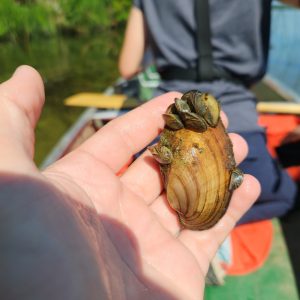
Biological Control of Pests
Biological control, or bio-control, is the use of natural enemies (such as predators, parasites, or pathogens) to manage pest populations. This method is rooted in population ecology, which helps scientists understand how pest and control species interact, how their populations grow and fluctuate, and how environmental factors influence their success. Biocontrol offers a sustainable alternative to chemical pesticides, aiming to reduce pest populations while minimizing harm to native species and ecosystems.

Effective bio-control relies on detailed ecological research. Scientists must identify natural enemies that are specific to the target pest and assess their potential impact on non-target species. Before introducing a biocontrol agent, researchers conduct extensive testing in controlled environments to ensure it will not become invasive or disrupt local ecosystems. Population models help predict how the bio-control agent will establish, spread, and affect pest populations over time.
In Ontario, bio-control has been used to control the emerald ash borer (Agrilus planipennis). Researchers have introduced several species of parasitic wasps from the beetle’s native range, which lay their eggs inside emerald ash borer larvae and eventually kill them. Population ecology models help determine the best release sites, timing, and expected impact of these wasps on beetle populations. Early results show that these bio-control agents are establishing in Ontario forests and contributing to the suppression of emerald ash borer populations.
Another promising bio-control effort is underway to manage invasive common reed (Phragmites australis). After over a decade of international research, two species of stem-boring moths were approved for release in 2019. These moths lay eggs on Phragmites stems; their larvae bore into the stalks, weakening the plant and reducing its ability to spread. The moths are highly specific to invasive Phragmites and pose no threat to native plants. Since their release, tens of thousands of moths have been introduced at dozens of sites across southern Ontario. Early results show promising signs of damage to Phragmites, suggesting the moths are establishing and beginning to suppress the invasive grass.

Bio-control does not aim to eradicate invasive species entirely but to restore ecological balance by reuniting pests with their natural enemies. That being said, bio-control is not without risks. Scientists must carefully evaluate potential bio-control agents to ensure they do not harm native species or become invasive themselves.
A Cautionary Tale: Asian Lady Beetle
The Asian lady beetle (Harmonia axyridis) was introduced in North America to control crop pests like aphids. While initially effective, it became invasive, out-competing native lady beetles and becoming a household nuisance. This example highlights the risks of bio-control when species are introduced without thorough ecological testing and long-term monitoring.

Knowledge Check
Text Description
- Introduction of new predators
- Legalization of DDT
- Conservation efforts, including banning DDT and protecting nesting sites
- Increased hunting of invasive species
- Overfishing of Atlantic cod
- Urban development of wetland areas
- Regulated lobster fishing with size limits and egg-bearing protections
- Introduction of non-native species for biodiversity
- They always improve soil quality
- They are native and help stabilize ecosystems
- They outcompete native species and disrupt local ecosystems
- They reproduce slowly and are easily contained
- By genetically modifying the pest species
- By introducing natural enemies like predators or parasites
- By increasing pesticide use
- By removing all native competitors
- Biocontrol always eradicates the target pest
- Biocontrol agents never affect native species
- Poorly tested biocontrol agents can become invasive and cause new problems
- Lady beetles are not effective against crop pests
Answers:
- c
- c
- c
- b
- c
OpenAI. (2025). ChatGPT. [Large language model]. https://chat.openai.com/chat
Prompt: Create 5 multiple-choice questions using the following content
“5.4 Invasive Species in London” from Exploring Nature by Kari Moreland is licensed under a Creative Commons Attribution-NonCommercial-ShareAlike 4.0 International License, except where otherwise noted.

